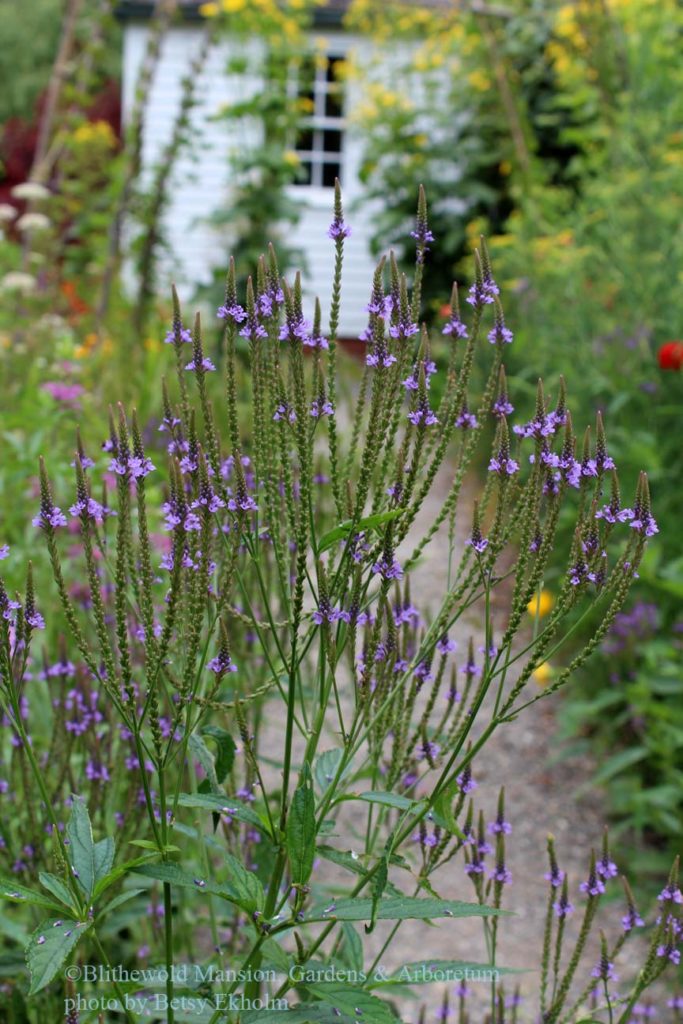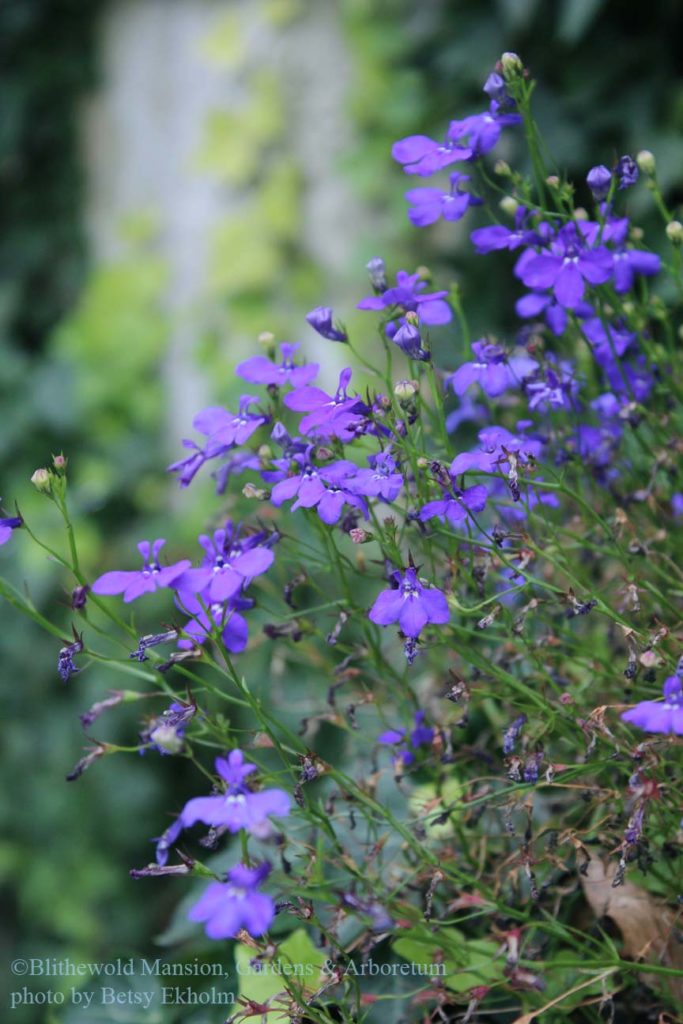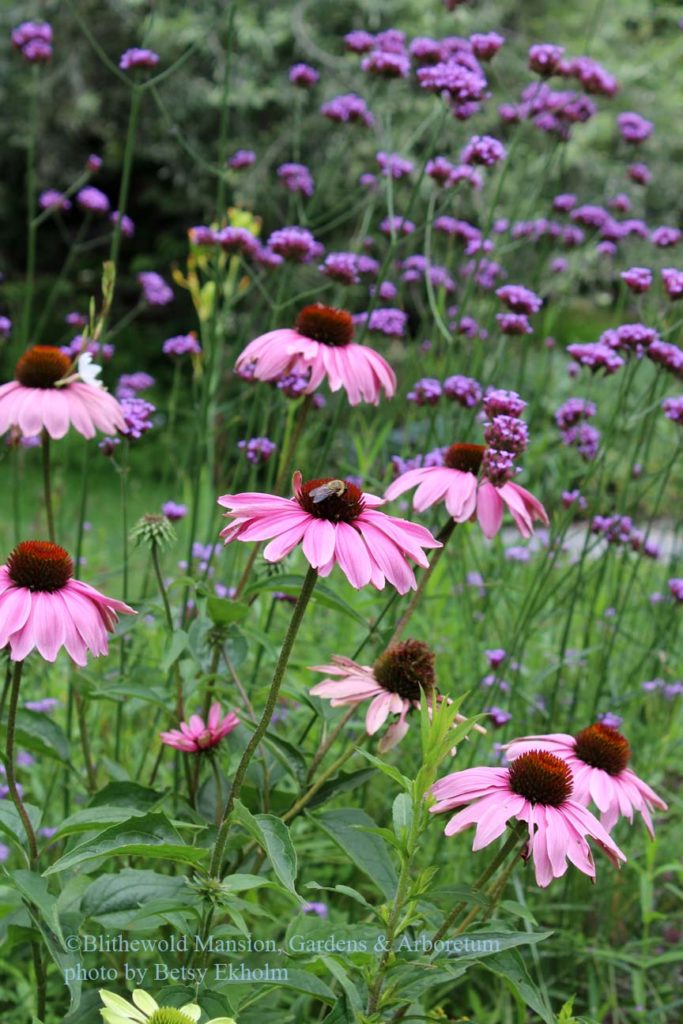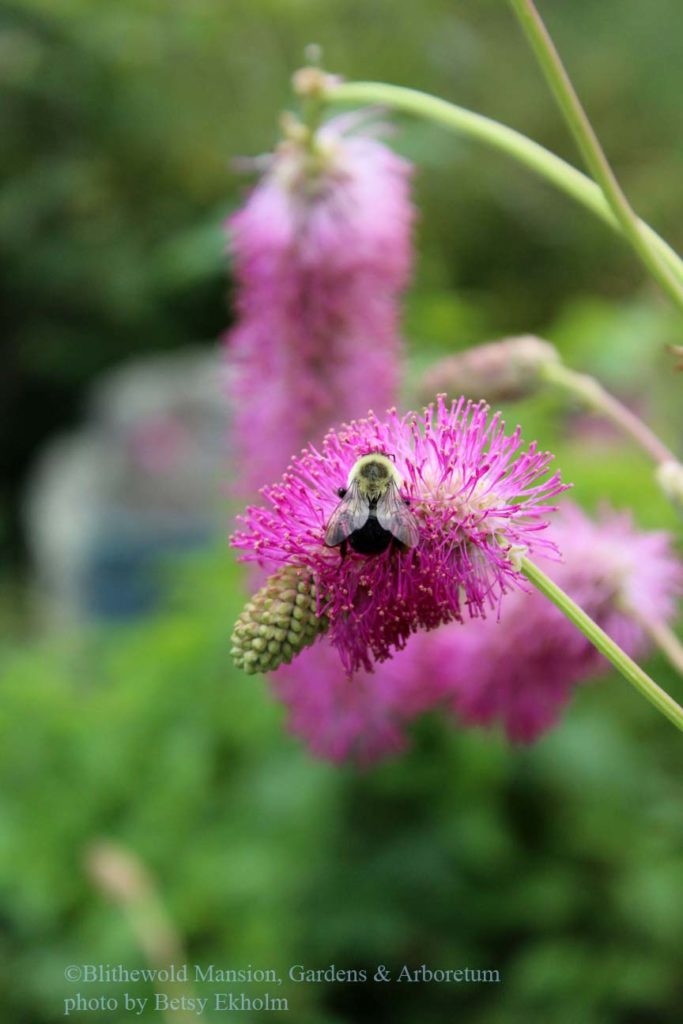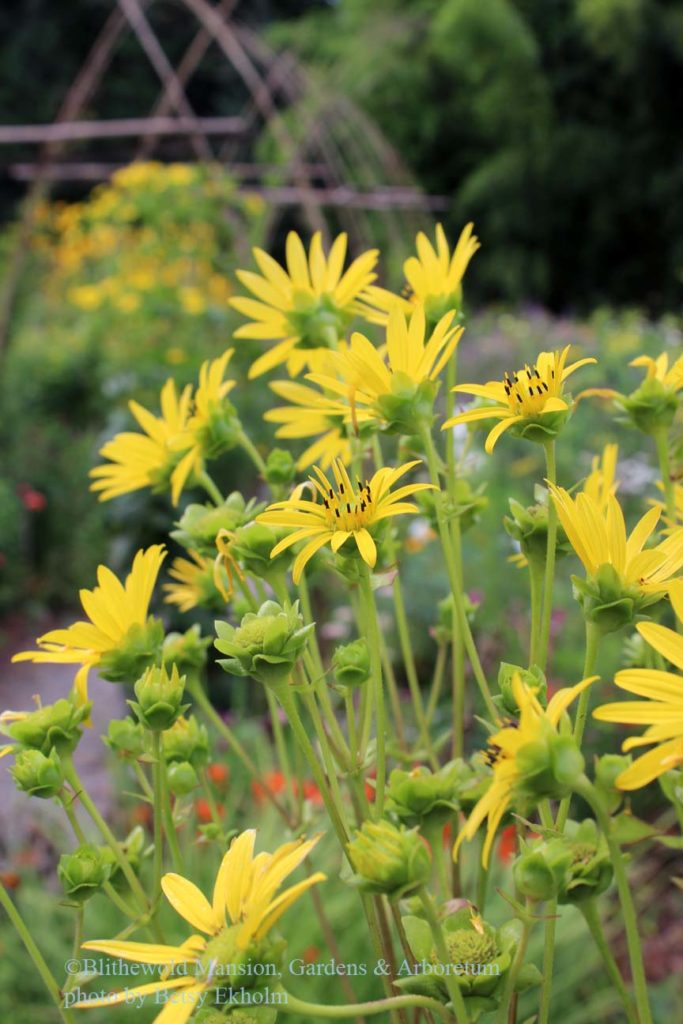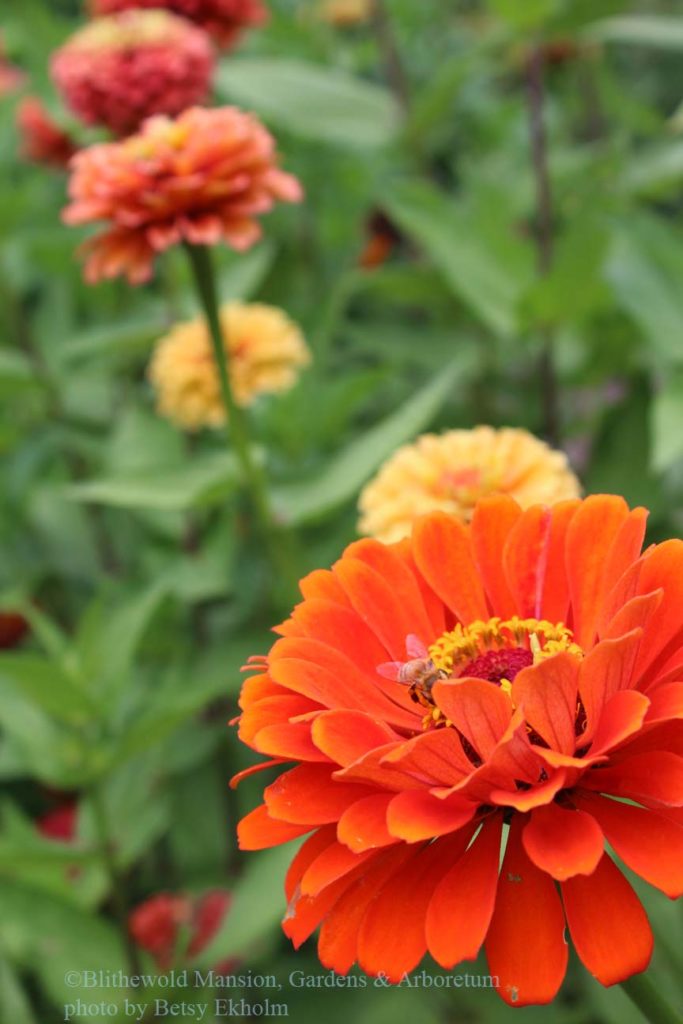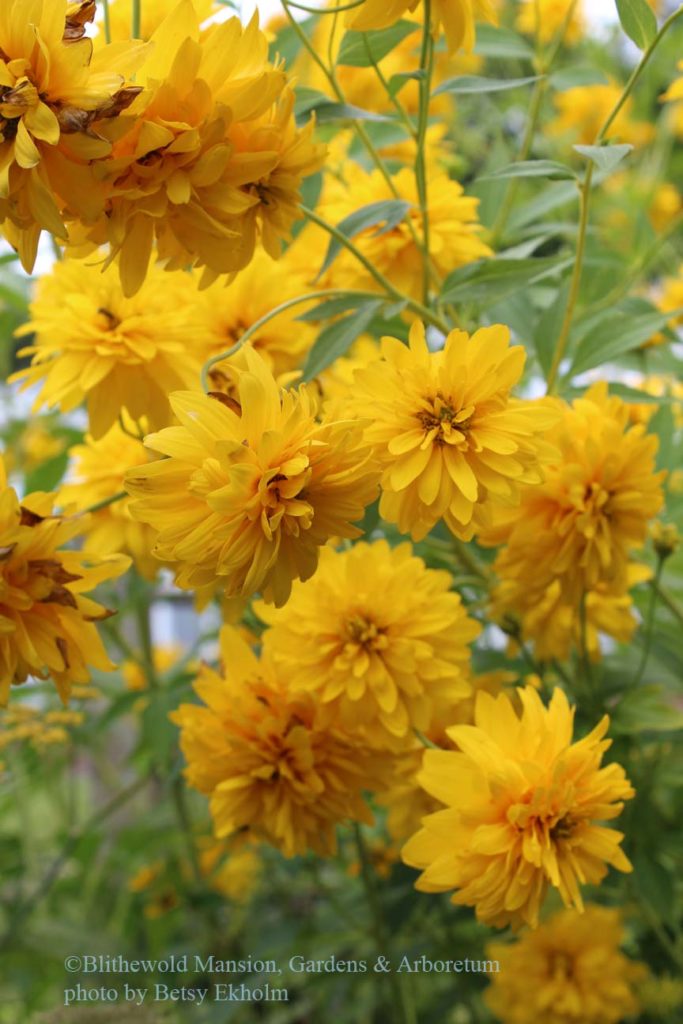How to Use Color in the Garden
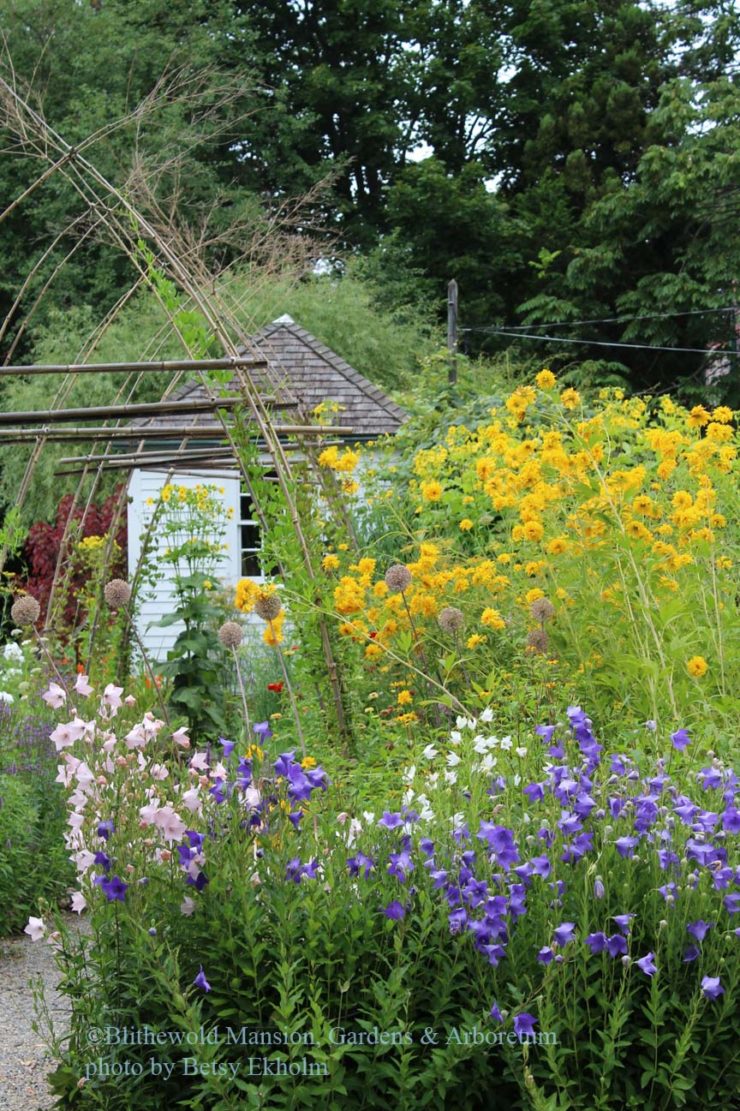
It is about this time each year that I become enamored with all the color in the gardens. Soft blues and lavenders, bright reds and oranges, pretty pinks and everything in between. I’ve written and spoken about color in the garden before, and my fascination has not ebbed in the years since. If you are looking for inspiration, you’ve come to the right place. Let’s take a look at late summer color in the gardens right now.
The blue vervain (left, above) lives – and self-sows – in the Cutting Garden. This particular plant is a seedling that planted itself right along the path. We left it alone since it is mainly out of the way and because it allows all our visitors to see up close the pollinators that so enjoy these flowers. I find the strong form coupled with the soft purple color pleasing to the eye.
From upright structure to softly falling flowers, we look now at the Lobelia ‘Regatta Marine Blue’ planted in the stones by the North Garden fountain. The trailing blue flowers echo the falling water from the fountain and create a place of peace and reflection for visitors to stop and enjoy. Since blue recedes from the eye, I find the lobelia truly draws you in to this location.
My love affair with pink has not dwindled, though I have attempted to branch out in my color choices for the gardens. Gail and I couldn’t resist, however, the fluffy pink blooms of Japanese burnet (Sanguisorba obtusa ‘Tickled Pink’) in our redesign of the Rose Garden. Not only are the flowers a vibrant shade with unusual form but they are truly loved by pollinators. We love the sense of both activity and fun this creates, especially as these flowers are some of the last to enjoy on the way back out to the parking lot. It is our way of imparting to all of you one last treat for the road.
The Echinacea in bloom in the Trough Garden is backed by a slightly diminutive form of Verbena bonariensis called ‘Lollipop.’ I have a sneaking suspicion that this cultivar crossed with the much taller parent plant (in flower near by) and came out with seedlings in between the two sizes. Either way, I am really enjoying the tones of pink and purple together. It feels like a garden I would have created as a child, which brings me joy. Gardens should be fun, after all.
Speaking of fun, we’ve arrived at yellow. It is often the color of early spring (daffodils and trout lily come to mind). The late summer yellows in the Cutting Garden are just as joyful but so much taller than their spring counterparts. The Virginia Cup Plant (Silphium perfoliatum var. connatum) is a giant with the capability of reaching 10 feet tall. Many visitors have remarked on this plant in recent weeks and it is so fun to see the awe it inspires.
Not to be outdone, the cutleaf coneflower (Rudbeckia laciniata ‘Golden Glow’) at the other end of the Cutting Garden is taller than ever this year. This is at least partially due to the fact that we didn’t give it the “Chelsea Chop” this year. It is easily 7-8 feet tall. In the sun, one can see how it got its name as the flowers positively glow when they are back lit. A cheerier flower I would have a hard time finding.
I include the zinnias in this group since they are another inviting bloom that emanates warmth. I believe this is partially due to the fact that red (and nearby orange on the color wheel) appears closer than it is in space. This is the opposite of the blue lobelia mentioned earlier. Warm tones like these zinnias allow large spaces to seem less overwhelming. I have seen this used strategically in a large garden in Connecticut. It could have been too much to take in, but the color choices and overall design made it accessible to visitors.
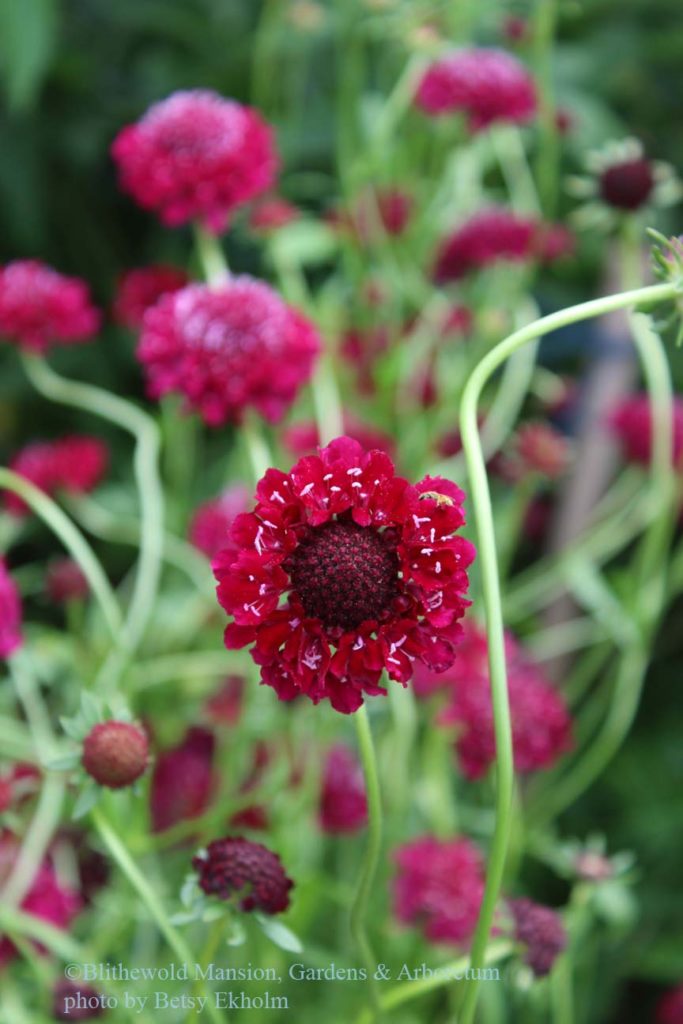
I leave you with this last saturated blossom. Scabiosa ‘Merlot Red’ is currently in bloom in the Cutting Garden. Not every color fits perfectly into a color scheme. I would have a tough time designing a whole garden around this particular shade. However, in the Cutting Garden it fits right in with the rainbow of other colors on display. This just goes to show that sometimes a flower is worth growing even if it is not the “perfect” tone or shade. There will always be a place for drama and fun and whimsy in our Display Gardens.
We hope you are enjoying the color in your own garden right now. What is your favorite flower in bloom? Leave a comment below!

